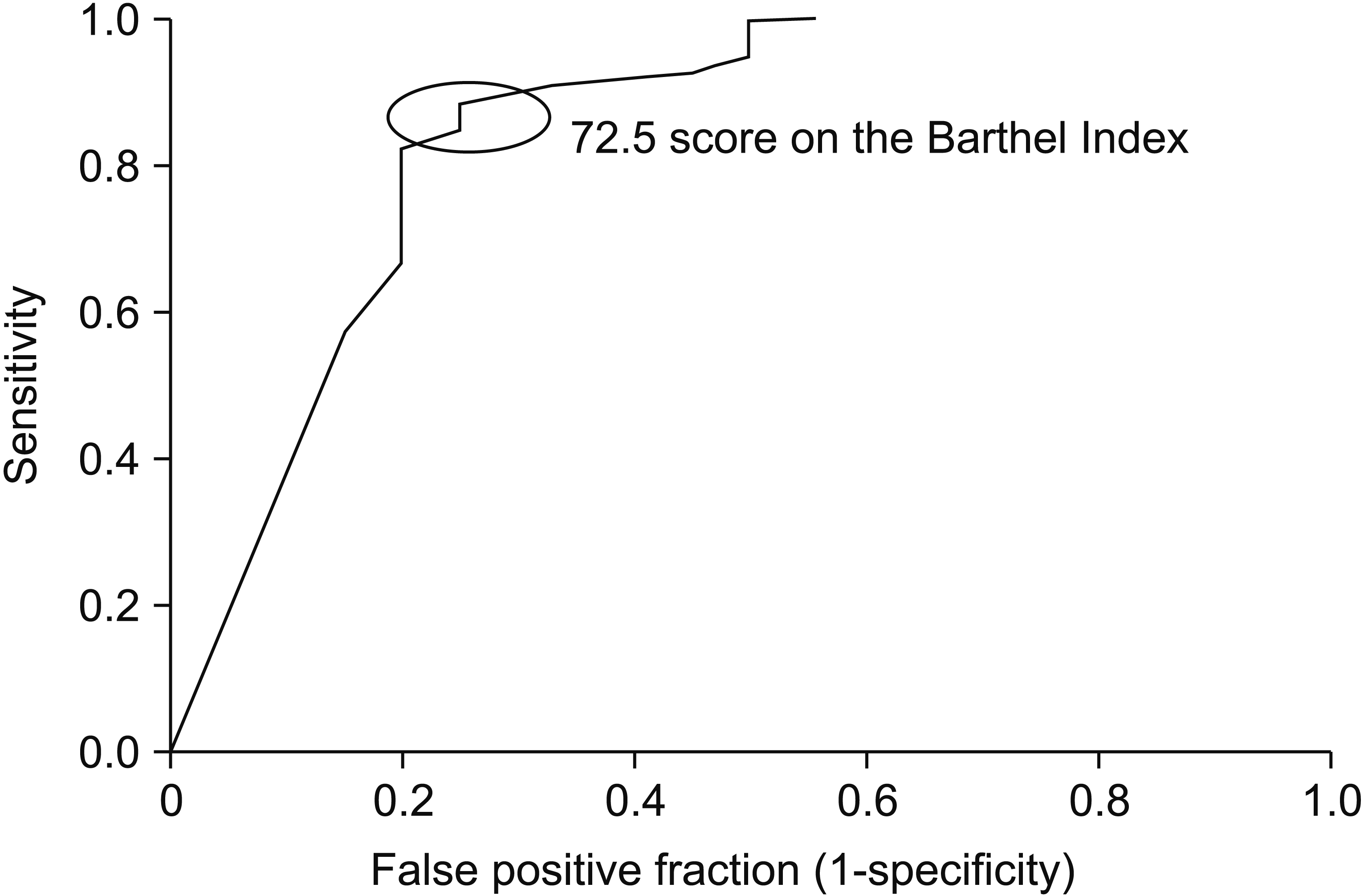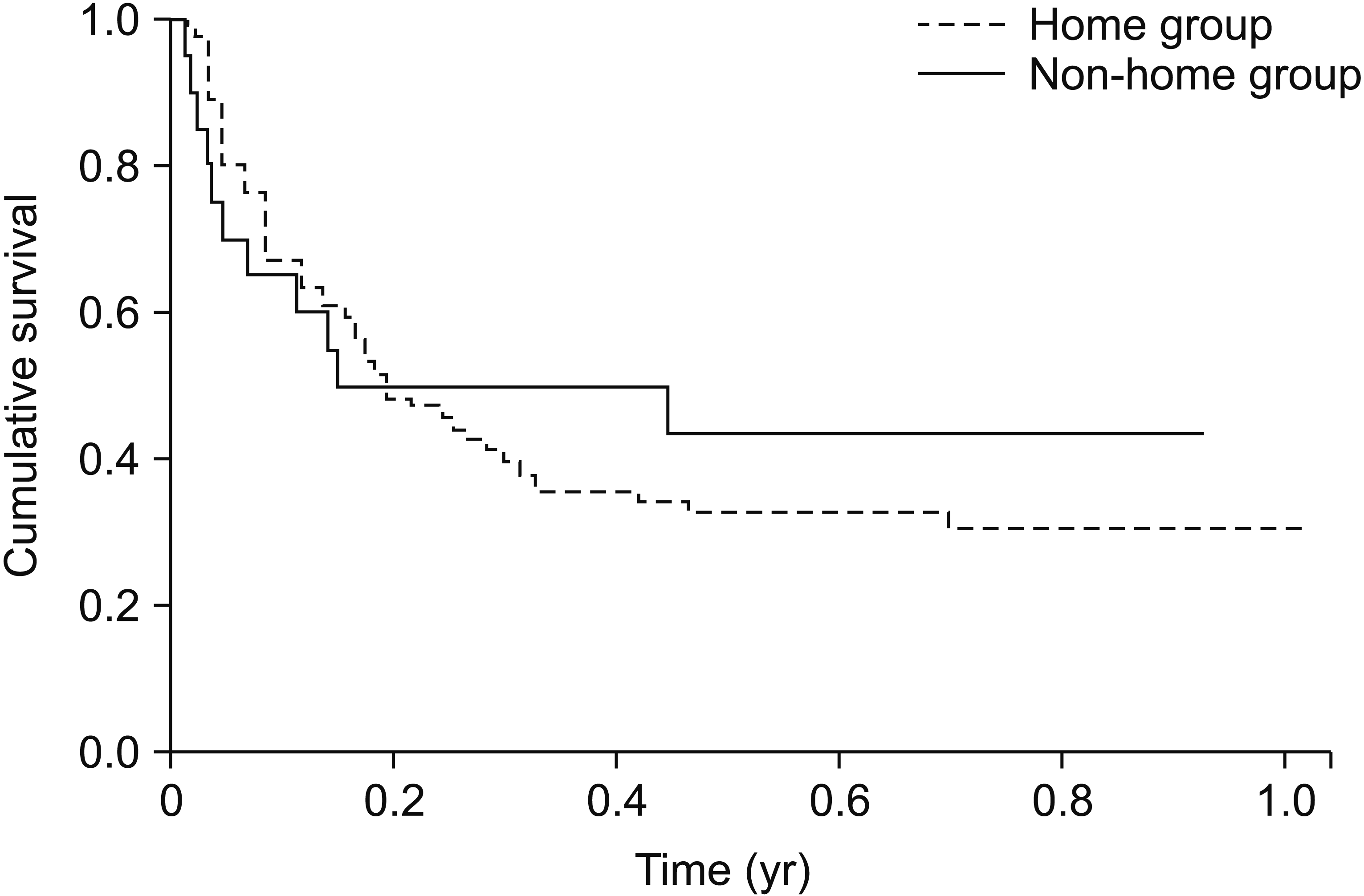1. Coleman RE. Metastatic bone disease: clinical features, pathophysiology and treatment strategies. Cancer Treat Rev. 2001; 27:165–76.
2. Harrington KD. Orthopedic surgical management of skeletal complications of malignancy. Cancer. 1997; 80:1614–27.

3. Barron KD, Hirano A, Araki S, Terry RD. Experiences with metastatic neoplasms involving the spinal cord. Neurology. 1959; 9:91–106.

4. Walsh GL, Gokaslan ZL, McCutcheon IE, Mineo MT, Yasko AW, Swisher SG, et al. Anterior approaches to the thoracic spine in patients with cancer: indications and results. Ann Thorac Surg. 1997; 64:1611–8.
5. Black P. Spinal metastasis: current status and recommended guidelines for management. Neurosurgery. 1979; 5:726–46.
6. Schaberg J, Gainor BJ. A profile of metastatic carcinoma of the spine. Spine (Phila Pa 1976). 1985; 10:19–20.

7. Stark RJ, Henson RA, Evans SJ. Spinal metastases: a retrospective survey from a general hospital. Brain. 1982; 105:189–213.
8. Vieth RG, Odom GL. Extradural spinal metastases and their neurosurgical treatment. J Neurosurg. 1965; 23:501–8.

9. Bunting RW, Boublik M, Blevins FT, Dame CC, Ford LA, Lavine LS. Functional outcome of pathologic fracture secondary to malignant disease in a rehabilitation hospital. Cancer. 1992; 69:98–102.

10. Tang V, Harvey D, Park Dorsay J, Jiang S, Rathbone MP. Prognostic indicators in metastatic spinal cord compression: using functional independence measure and Tokuhashi scale to optimize rehabilitation planning. Spinal Cord. 2007; 45:671–7.

11. Denti L, Agosti M, Franceschini M. Outcome predictors of rehabilitation for first stroke in the elderly. Eur J Phys Rehabil Med. 2008; 44:3–11.
12. Okuno Y, Miyasaka T, Dobashi K. Factors influencing the outcome of acute rehabilitation: functional independence measure assessment at discharge. J Phys Ther Sci. 2012; 24:491–4.

13. Fisher CG, DiPaola CP, Ryken TC, Bilsky MH, Shaffrey CI, Berven SH, et al. A novel classification system for spinal instability in neoplastic disease: an evidencebased approach and expert consensus from the Spine Oncology Study Group. Spine (Phila Pa 1976). 2010; 35:E1221–9.
14. Mahoney FI, Barthel DW. Functional evaluation: the barthel index. Md State Med J. 1965; 14:61–5.
15. Borg G. Psychophysical scaling with applications in physical work and the perception of exertion. Scand J Work Environ Health. 1990; 16 Suppl 1:55–8.

16. Oczkowski WJ, Barreca S. The functional independence measure: its use to identify rehabilitation needs in stroke survivors. Arch Phys Med Rehabil. 1993; 74:1291–4.

17. Massucci M, Perdon L, Agosti M, Celani MG, Righetti E, Recupero E, et al. Prognostic factors of activity limitation and discharge destination after stroke rehabilitation. Am J Phys Med Rehabil. 2006; 85:963–70.

18. Granger CV, Dewis LS, Peters NC, Sherwood CC, Barrett JE. Stroke rehabilitation: analysis of repeated Barthel index measures. Arch Phys Med Rehabil. 1979; 60:14–7.
19. McKinley WO, Conti-Wyneken AR, Vokac CW, Cifu DX. Rehabilitative functional outcome of patients with neoplastic spinal cord compressions. Arch Phys Med Rehabil. 1996; 77:892–5.
20. Agarwal V, McRae MP, Bhardwaj A, Teasell RW. A model to aid in the prediction of discharge location for stroke rehabilitation patients. Arch Phys Med Rehabil. 2003; 84:1703–9.
21. Koyama T, Sako Y, Konta M, Domen K. Poststroke discharge destination: functional independence and sociodemographic factors in urban Japan. J Stroke Cerebrovasc Dis. 2011; 20:202–7.

22. Sommerfeld DK, von Arbin MH. Disability test 10 days after acute stroke to predict early discharge home in patients 65 years and older. Clin Rehabil. 2001; 15:528–34.

23. Cormie P, Newton RU, Spry N, Joseph D, Taaffe DR, Galvao DA. Safety and efficacy of resistance exercise in prostate cancer patients with bone metastases. Prostate Cancer Prostatic Dis. 2013; 16:328–35.

24. Cormie P, Galvao DA, Spry N, Joseph D, Taaffe DR, Newton RU. Functional benefits are sustained after a program of supervised resistance exercise in cancer patients with bone metastases: longitudinal results of a pilot study. Support Care Cancer. 2014; 22:1537–48.





 PDF
PDF Citation
Citation Print
Print





 XML Download
XML Download